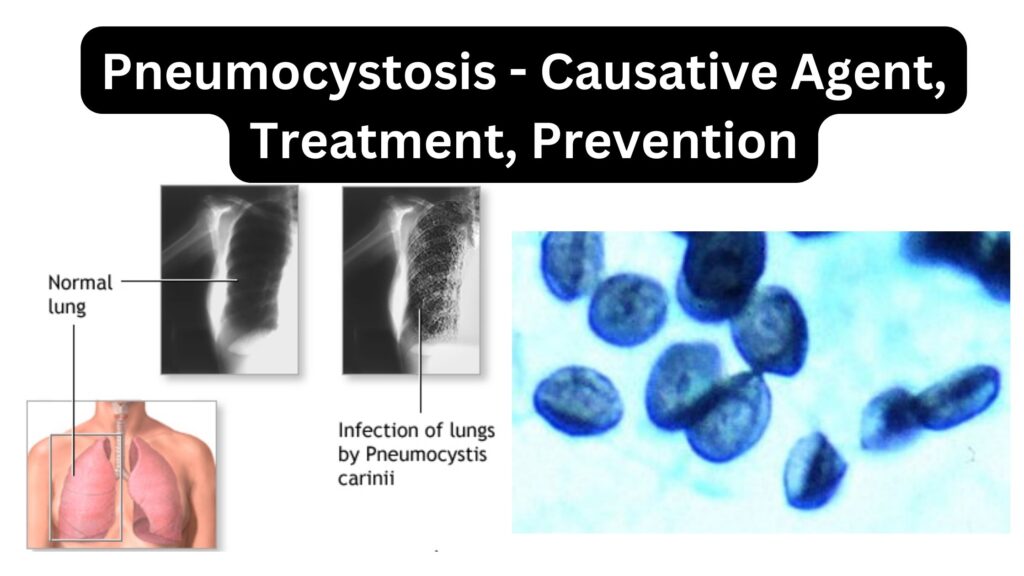Pneumocystis Jirovecii Pneumonia Prevention: Pneumocystis jirovecii pneumonia (PJP) poses a significant threat to immunocompromised individuals, including patients with HIV/AIDS, organ transplants, hematologic malignancies, and autoimmune disorders requiring immunosuppressive therapy. Preventing this opportunistic fungal infection is essential to reduce morbidity, mortality, and healthcare burden.
Preventive strategies center on risk identification, targeted chemoprophylaxis, and continuous monitoring of immune status. Early implementation of prophylaxis in at-risk populations significantly lowers the incidence and improves long-term outcomes.

Identifying High-Risk Populations for PJP
We must first recognize the groups most susceptible to PJP in order to implement timely preventive measures:
- HIV/AIDS patients with CD4+ T-cell counts <200 cells/μL
- Solid organ transplant recipients, especially lung, heart, and kidney transplants
- Stem cell transplant recipients, both allogeneic and autologous
- Cancer patients, particularly those with hematologic malignancies such as leukemia or lymphoma
- Autoimmune disease patients on prolonged corticosteroids or immunosuppressants (e.g., methotrexate, cyclophosphamide, rituximab)
- Patients receiving biologic therapies targeting T-cells or TNF-α inhibitors
Primary Prophylaxis: The Cornerstone of PJP Prevention
Trimethoprim-Sulfamethoxazole (TMP-SMX): First-Line Agent
TMP-SMX remains the most effective agent for preventing PJP. It not only offers protection against P. jirovecii but also provides coverage for other infections such as toxoplasmosis and certain bacterial pathogens.
Recommended Regimens:
- One double-strength tablet (160 mg TMP/800 mg SMX) orally once daily
- One single-strength tablet daily or three times weekly as an alternative
- Intravenous dosing in patients unable to tolerate oral intake
TMP-SMX is well-tolerated in most patients. Monitoring for adverse effects such as rash, neutropenia, or renal dysfunction is recommended.
Alternative Prophylactic Agents
For patients who are intolerant to TMP-SMX, we recommend the following options:
| Agent | Dosage | Indications |
|---|---|---|
| Dapsone | 100 mg orally once daily | Avoid in G6PD deficiency |
| Atovaquone | 1500 mg orally once daily with fatty meal | For mild-moderate risk patients |
| Aerosolized Pentamidine | 300 mg inhaled monthly via nebulizer | May not prevent extrapulmonary PJP |
| Clindamycin + Primaquine | Used in treatment and as prophylaxis | Useful for TMP-SMX intolerant cases |
Regular assessment for hemolysis, especially in patients prescribed dapsone, is necessary. G6PD testing should be performed prior to initiation.
Duration and Discontinuation of Prophylaxis
HIV-Infected Patients
- Initiate prophylaxis when CD4 count falls below 200 cells/μL or with oral candidiasis
- Discontinue when CD4 count rises above 200 cells/μL for at least 3 months in response to antiretroviral therapy (ART)
- Reintroduce prophylaxis if CD4 count declines again or viral load rebounds
Non-HIV Immunocompromised Patients
- Transplant recipients: Continue for at least 6–12 months post-transplant, or longer if still receiving immunosuppression
- Oncology patients: Prophylaxis during periods of intensive chemotherapy or profound lymphopenia
- Autoimmune diseases: Continue while on high-dose corticosteroids (≥20 mg/day prednisone equivalent for >4 weeks)
Adverse Effects Monitoring and Management
While prophylaxis with TMP-SMX is effective, certain adverse effects require attention:
- Hypersensitivity reactions: Rash, fever, Stevens-Johnson syndrome
- Myelosuppression: Leukopenia, thrombocytopenia
- Renal toxicity: Monitor creatinine and electrolyte levels
- Hyperkalemia: Especially in patients with renal dysfunction
Management includes temporary discontinuation, dose adjustment, or switching to alternative agents based on clinical evaluation.
Infection Control and Environmental Measures
Although Pneumocystis jirovecii is not highly contagious, we recommend:
- Respiratory isolation precautions in hospitalized PJP patients
- Minimizing exposure to hospital environments with known cases in transplant units
- Hand hygiene and PPE adherence among healthcare workers
- Avoiding unnecessary immunosuppressants when clinical conditions allow
Role of Antiretroviral Therapy in HIV-Related Prevention
Early initiation of ART in HIV-positive individuals plays a critical role in reducing the risk of PJP by restoring immune function. We emphasize:
- Initiation of ART as soon as possible after HIV diagnosis
- Regular monitoring of CD4 count and viral load
- Education on adherence to both ART and PJP prophylaxis
Adherence to ART is the most effective long-term strategy for preventing opportunistic infections, including PJP.
Guidelines and Recommendations from Leading Health Organizations
CDC Recommendations
- Prophylaxis for all HIV patients with CD4 count <200 cells/μL
- Use of TMP-SMX as the first-line agent in all qualifying patients
- Consideration of prophylaxis in non-HIV patients based on clinical risk assessment
Infectious Diseases Society of America (IDSA)
- Strong recommendation for TMP-SMX use in transplant recipients and hematologic malignancy patients
- Risk-based individualized prophylaxis in patients with autoimmune diseases receiving immunosuppressants
Frequently Asked Questions
When should PJP prophylaxis be started?
It should be started when a patient’s CD4 count falls below 200 cells/μL (HIV) or if receiving high-risk immunosuppressive treatment (non-HIV).
Can PJP prophylaxis be stopped?
Yes, in HIV patients, prophylaxis can be stopped after sustained immune recovery. In non-HIV cases, it depends on immunosuppressive status.
What are the side effects of TMP-SMX?
Common effects include rash, elevated creatinine, hyperkalemia, and neutropenia.
Is PJP contagious?
While airborne transmission is possible, it is rare and not typically spread in healthcare settings.
What if a patient cannot take TMP-SMX?
Alternatives include dapsone, atovaquone, aerosolized pentamidine, or clindamycin plus primaquine.
Comprehensive Prevention Reduces PJP Incidence
Preventing Pneumocystis jirovecii pneumonia requires a multifaceted approach tailored to individual risk profiles. With the proper use of prophylactic agents, close monitoring of immune status, and early intervention, we can significantly lower the burden of this life-threatening infection across vulnerable populations.